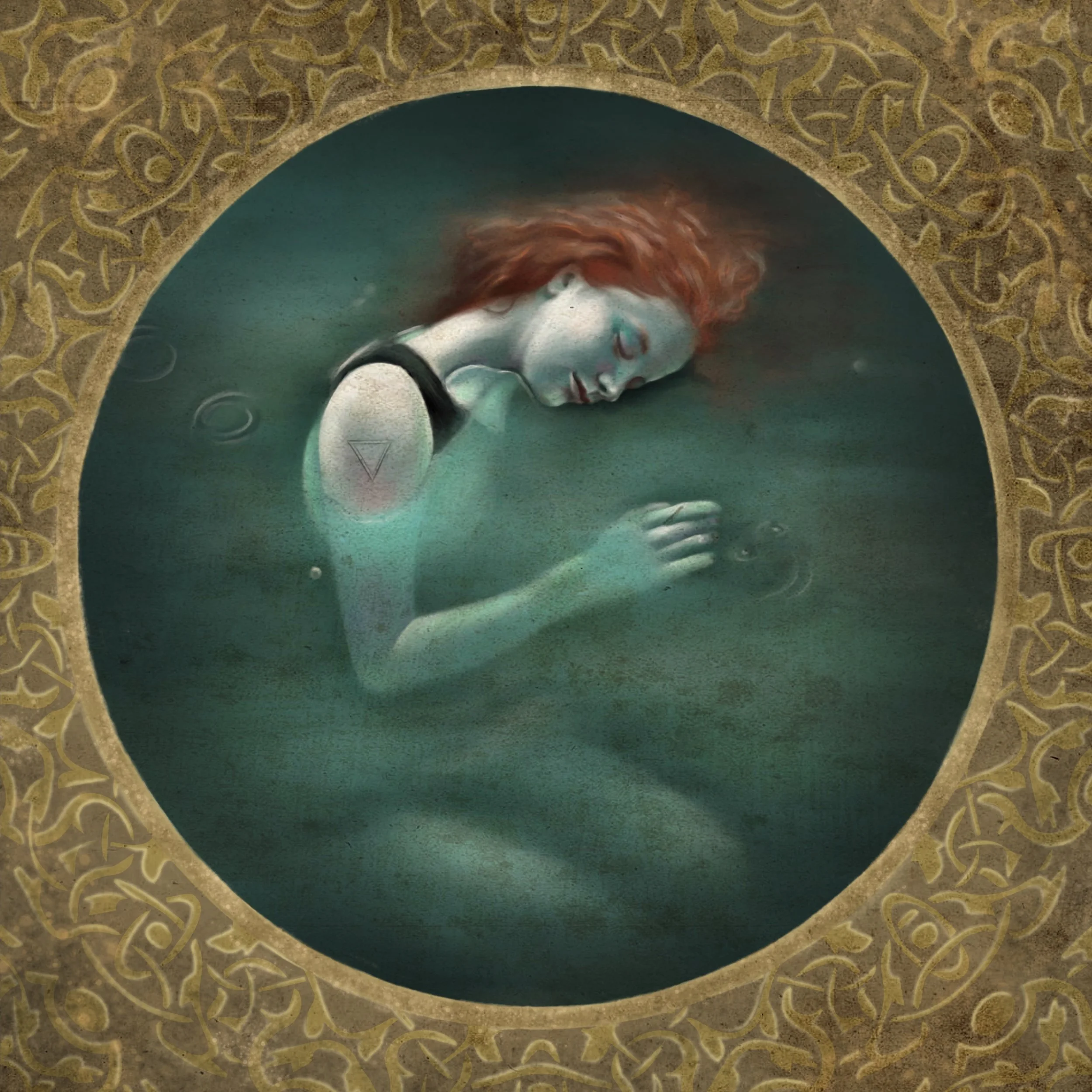Swim the Witch
Digital Painting
It was believed that water rejected servants of the devil and that if a suspected person floated and refused to sink when placed in water it was proof of guilt. The ordeal of 'swimming' was endorsed by James I of England, who stated in Daemonologie (1597) "that God hath appointed ... that the water shall refuse to receive them in her bosome, that have shaken off them the sacred Water of Baptisme, and wilfully refused the benefite thereof."
A suspect would be stripped naked and then tied up - the right thumb to the left big toe and vice versa. In this position she was then secured by ropes and thrown into a deep stream or pond three times. If she sank (and often drowned) she was deemed as innocent - if she 'fleeted' (floated) then she was 'guilty'. Often men with long poles were employed to push her under the water, while others, holding the ropes could drag her to the surface again. It became well known that, if the poor victim was laid out 'flat on their back and holding up their feet with a string' then 'the forepart will not sink'
My painting depicts an accused woman immersed in a body of water, on the cusp of life and death, what begins as a torture transforms into a ritual bath. She embraces her new form.
The final official use of 'Swimming' happened in Leicester in 1717, where the unfortunate accused, mother and daughter, 'swam like a cork, a piece of paper or an empty barrel, though they strove all they could to sink',

